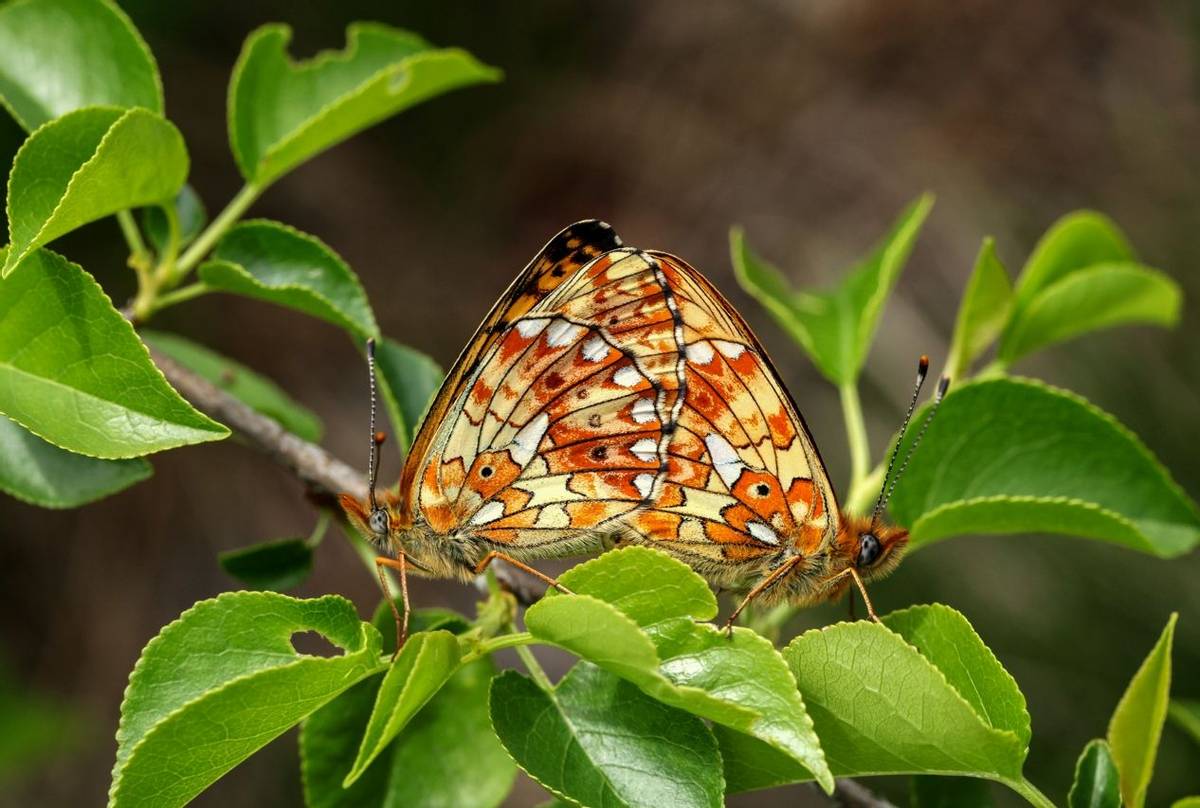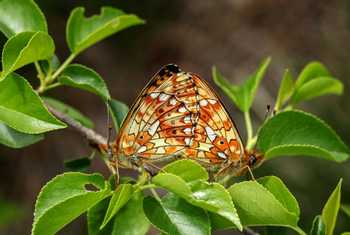La Brenne is a beautiful, peaceful area with little traffic and it teems with wildlife of all kinds. Emilie Mitchell was brilliant. She worked tirelessly to make sure we saw butterflies and birds. She skilfully adapted the programme to suit the weather, both rain and very hot conditions. I cannot thank her enough for her efforts . She gave us a wonderful experience and was unfailingly enthusiastic, cheerful and knowledgeable. I saw many birds and butterflies I had never seen before. A great deal was packed into four very busy days.
J.K. Leicestershire, Jun 23



Tour Itinerary and Reports
Can I help you?
France - Butterflies of La Brenne
Tour Code: FRA06A 6-day holiday, travelling to and from Tours by train, to enjoy the exceptionally rich wildlife of La Brenne, focusing in particular on its remarkable variety of butterflies.
£1,395 (Inc train)
£1,195
Highlights
Tour Itinerary and Reports
Can I help you?
Quick Enquiry
Summary
Known locally as ‘The Land of a Thousand Lakes’, La Brenne harbours a rich tapestry of habitats including marshes, deciduous woods, dry heathland and farmland. The area we visit has nearly twice the number of butterflies compared with Britain and, as La Brenne is not an extensive area, most of the habitats we visit are within a short drive of our comfortable hotel at Mézières.
- Travel by train on a flight-free holiday!
- 97 butterfly species recorded, including many not found in the UK
- A wealth of blues, coppers, fritillaries & much more
- Rarities such as Lulworth Skipper & Berger’s Clouded Yellow
- Great Peacock, nonpareils & wetland species in evening moth-trapping sessions
- Based in a quiet, picturesque corner of France
- Led by Naturetrek’s own resident expert
Grading
Grade A. Day walks only.
La Brenne lies in an area of central France south of the Loire, about 80 kilometres south-east of Tours and 80 kilometres east of Poitiers. It is known locally as ‘The Land of a Thousand Lakes’ because of the numerous pools, mostly man-made, which dot its landscapes. Owing to the French appetite for freshwater fish, these have been managed over the centuries for fishing, and being privately owned by numerous smallholders, a rich tapestry of habitats has developed, including marshes, deciduous woods, dry heathland and farmland.
La Brenne is both the home and workplace of our local guides, Jason and Emilie Mitchell. Jason has been visiting La Brenne at least annually since 2001, and the region's exceptional wildlife and unique ambiance prompted him to move there with his family in 2013. Both Jason and Emilie have an exceptional knowledge and passion for this little-known wildlife gem lost in central France.
La Brenne has a dense population of breeding birds in the spring. Its heronries are of particular note, with good populations of both Grey and Purple Herons, Little Egrets, and Cattle Egrets (a recent colonist). Night Herons, Bittern and Little Bittern may also be seen with a little luck, whilst a careful search of the lakes reveals breeding Black-necked Grebes and Garganey, and overhead Black and Whiskered Terns — the latter more numerous here than anywhere else in France. No fewer than 16 species of warbler have bred in the area, and these include Savi’s, Great Reed, Cetti’s, Fantailed, Melodious, Dartford and Bonelli’s Warblers. The variety of habitats is particularly appealing to birds of prey. Whilst Black Kites, Short-toed Eagles and Honey Buzzards may be seen over the woodlands, Marsh, Montagu’s and Hen Harriers quarter reedbeds, marshes and arable land, and the dashing Hobby may be seen almost anywhere. In the farmland Quail and Stone Curlew may be found; in orchards and woodland are Wrynecks, Red-backed Shrikes, Black Redstarts, Short-toed Treecreepers, Serins and Cirl Buntings. The calls of Hoopoes and Golden Orioles, and liquid songs of Nightingales complete this classic collection of European birds. Although some of these birds, such as Montagu’s and Marsh Harrier, Honey Buzzard, Stone Curlew and Cirl Bunting occur locally or in small numbers in southern England, in La Brenne they are widespread and common. Likewise, a number of butterflies that are rare in England are common in La Brenne. These include the Large Tortoiseshell, Swallowtail, Scarce Swallowtail, White Admiral and Purple Emperor.
Most remarkably, no fewer than 36 species of orchid occur in the area! Whilst they are not all in flower at the same time, species we have seen on previous visits at this time of year include Early Spider (Ophrys sphegodes), Fly (Ophrys insectifera), Monkey (Orchis simia), Burnt Tip (Orchis ustulata), Lizard (Himantoglossum hiricinum), Tongue (Serapias lingua) and Violet Bird’s Nest Orchid (Limodorum abortivum). Other plants of interest that we should see include Milkweed (Vincetoxicum hirundinaria), White Asphodel (Asphodelus albus), Greater Broomrape (Orobanche rapum-genistae), Hairy Spurge (Euphorbia villosa), Blue Bugle (Ajuga genevensis) and Viper’s Grass (Scorzonera humilis).
Though rich in interest, La Brenne is not an extensive area and most habitats are within short drives of our hotel at Mézières. Thus we can maximise our time spent in the field, limiting the time spent in minibuses. This, therefore, is an ideal trip for the all-round naturalist, or the botanist, entomologist or birdwatcher who prefers unhurried outings, with the opportunity to sit for an hour or more by a lake watching a colony of Whiskered Terns, observing dragonflies, or searching for orchids.
Outline Itinerary

What's Included?
- Trains
- Accommodation:
A small, comfortable hotel with en suite rooms. Rooms tend to be on the small side with quite spartan furniture.
- Food:
All included in the price, starting with dinner on Day 1 and finishing with breakfast on day 6
Reviews
-
-
Jason led the party with good knowledge, good humour and greatly helped us enjoy our new found interest in butterflies/dragonflies.
Mr & Mrs H. Kent -
Tony Williams proved to be an excellent leader, determined for us to see as many species of butterfly as possible (including the elusive Woodland Brown!). The highlight of the trip was our visit to the private estate with its amazing wild flower meadows, but all the days were good. The lunches were excellent - lots of choice and variety, with all tastes catered for. We could not fault the organisation.
Mr & Mrs M. Wiltshire -
The trip was a delightful experience - the people were great and very interesting. Tony Williams really was outstanding - so knowledgeable! He was always cheerful and made it all great fun with much humour. A good family hotel which made us very welcome. A resounding success!
J.B. Cheshire -
A very enjoyable break in a lovely part of France with a very good, knowledgeable leader. I felt that in 4 days we covered the different habitats of La Brenne and saw many excellent species of butterfly. Also birds and dragonflies!
A.L. Rutland
Dates & Prices
2024

Tour Leader: Emilie Mitchell
2025
Why Naturetrek?
At Naturetrek we craft expertly-guided group and tailor-made wildlife holidays and cruises to all seven continents. On one of our holidays, you can be assured that our passionate team will enable you to experience and enjoy the best of the world's wildlife and natural spectacles in as comfortable and rewarding a manner as possible, caring as best we can for the environment in the process. We are proud to provide:
- The widest choice of wildlife holidays worldwide
- Tours managed and led by naturalists, for naturalists
- Outstanding value and exceptional customer service
Furthermore, as a Naturetrek client, our office team are always to on hand to help you – so if you have any queries about your holiday, whether before or after you have booked, we will be delighted to answer them on the phone. Please just give our team a call!

 Loading search...
Loading search...














































